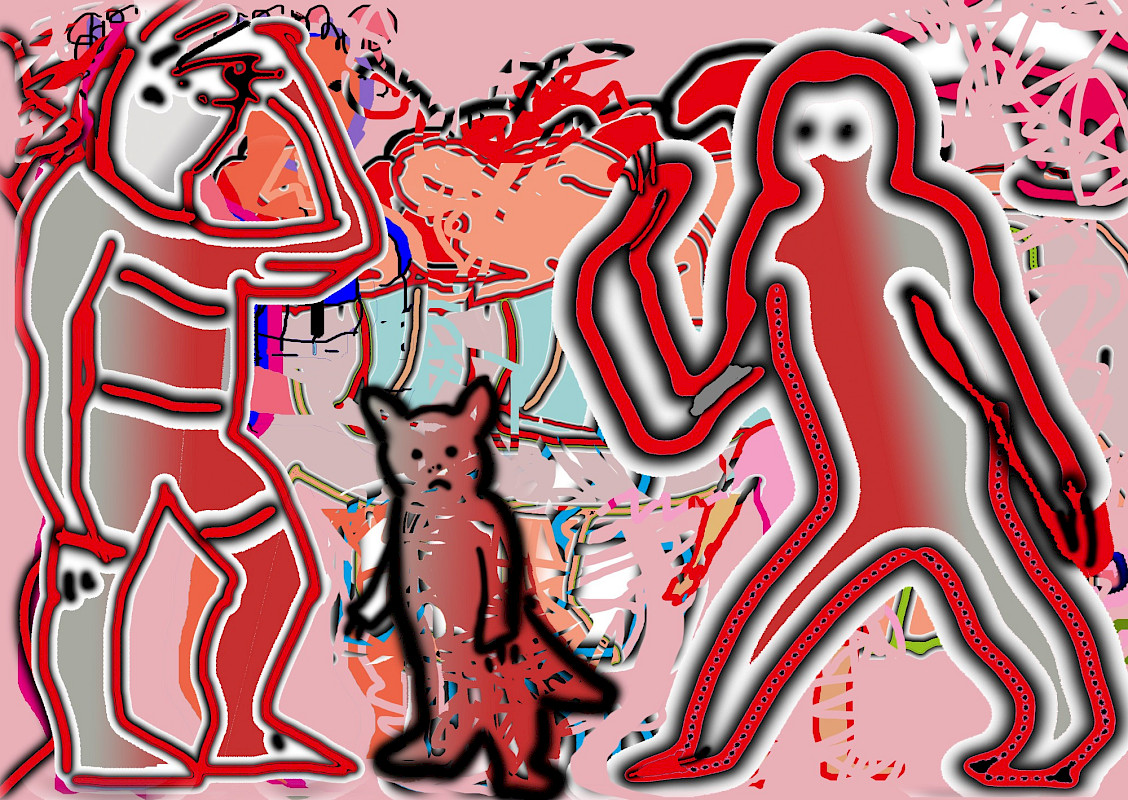Johanna Obermüller

Permanent change as an artistic concept characterises the work of Johanna Obermüller, born in 1938 in Timișoara, Romania, who has been living in Pentling near Regensburg for a long time. Figurative or colour field painting, plastic modelling or modular building block objects, manual application of paint or digital line work – for more than 60 years, Obermüller has been unafraid to tackle different techniques, materials, and thematic issues.
The comprehensive retrospective at the Kebbel-Villa presents a selection of works by Obermüller from various creative phases over the past 35 years. These include, for example, her "Scheibenobjekte" (disc objects), created in the 1980s: large-format, modular arrangements, which had to be transportable and moveable for the artist, i.e., their parts had to fit into the car and could be set up by herself. From 2005 to 2007, during and following a stay in Odessa in Ukraine, the artist was mainly concerned with the human body, its proportions, and limbs, using pigment color on thin papers from East Asia.
The thin Kozo paper from Korea is also the carrier medium for Obermüller's "Pseudo Calligraphies" (2007/2008), which, as their name already suggests, do not really involve the art of decorative handwriting. Rather, they focus on formal aspects and technical issues. The paintings of the last ten years – created with acrylic paint on canvas as well as digitally on the PC – are again dominated by the human figure. The relationship between Western and Eastern cultures, especially the respective status of women, is the focal point of the acrylic paintings. In contrast, the digital works concentrate on the relationship between humans and animals. In these works, Obermüller is not concerned with the naturalistic depiction of bodies and living beings, instead, the emphasis is on the tension between figuration and abstraction, between contour and surface.
The restrictions and limitations of mobility during the current Corona pandemic are the subject of a series of recently created small sculptures, the core of which consists of cardboard cuboids: individual figures appear to want to free themselves from these cuboids or attempt to "fly" away from them. The urge for (free) movement and the impossibility of its realisation during the numerous lockdowns is thus metaphorically reflected.
Johanna Obermüller (1938 Timișoara, Romania, lives in Pentling near Regensburg, Germany) studied at the Academy of Fine Arts in Munich from 1958 to 1963. At the same time, she studied art history at the Ludwig Maximilian University of Munich. From 1964 to 1980, she was an art teacher and has since worked as a freelance artist. In 1976, she received the Cultural Promotion Prize of the City of Regensburg, and in 1980, the Förderpreis for the Lovis Corinth Prize of the Esslingen Artists' Guild. Her works were exhibited at numerous institutions and exhibition spaces in Germany and abroad, including the Museum Ostdeutsche Galerie Regensburg (1980), the Zone of Contemporary Fine Art in Ashville, US (1993), and the Embassy of the Republic of Korea in Berlin (2001). The Oberpfälzer Künstlerhaus in Schwandorf presented her solo exhibition "Teil und Gegenteil" already in 1995.

